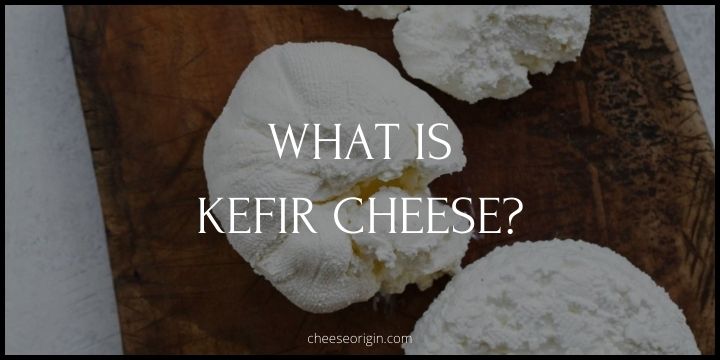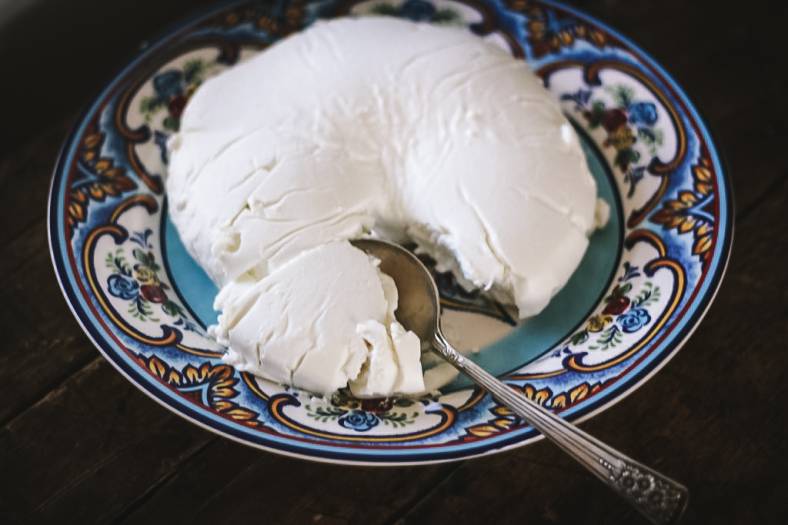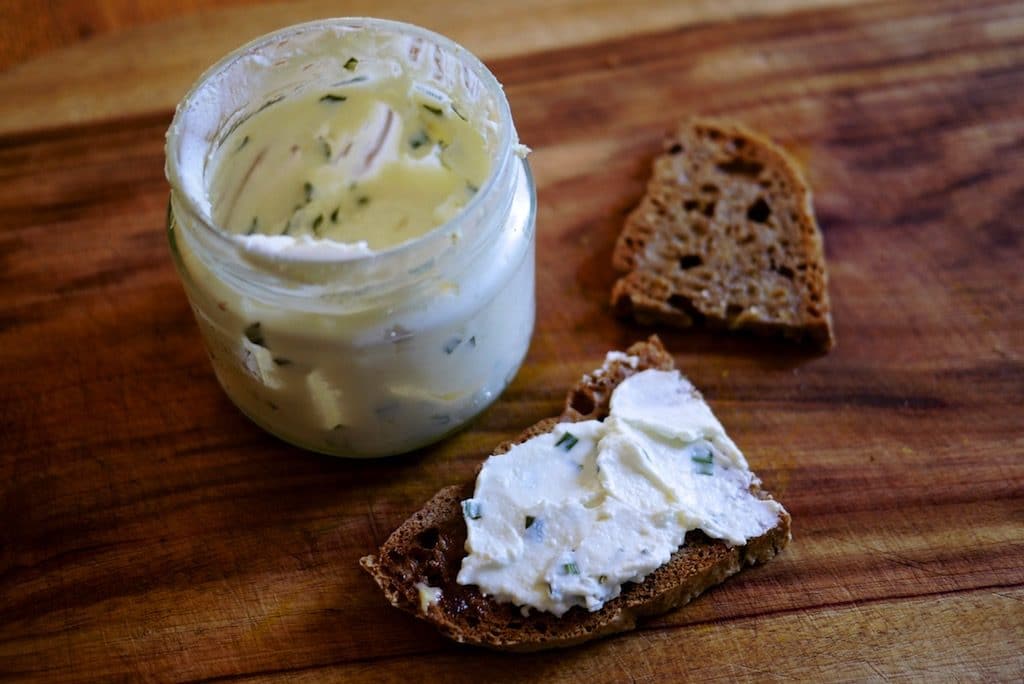What is Kefir Cheese? A Tangy Twist in the Dairy World

Are you ready to embark on a culinary journey that’s sure to tantalize your taste buds? Say hello to Kefir Cheese, the dairy world’s best-kept secret. This creamy delight, with its unique tangy twist, is not just a cheese—it’s an experience.
Made from kefir grains and milk, this probiotic-rich food is a delightful blend of texture and taste that stands out in the dairy aisle. Whether you’re a cheese connoisseur or someone looking to explore new flavors, Kefir Cheese promises to introduce you to a world of tangy goodness.
Quick Facts About Kefir Cheese
| Quick Facts | Details |
|---|---|
| Origin | Originates from Eastern Europe and Southwest Asia. |
| Type | Type of soft, fermented cheese made from kefir grains. |
| Taste | Tangy, slightly sour taste, similar to yogurt. |
| Texture | Typically soft and spreadable, with a consistency similar to cream cheese. |
| Nutrition | High in protein, calcium, and probiotics, making it a healthy cheese option. |
| Lactose | The fermentation process reduces the lactose content, making it suitable for those with lactose intolerance. |
| Uses | Can be used as a spread, in salads, or as a substitute for yogurt or sour cream in recipes. |
| Shelf Life | Can last for up to two weeks in the refrigerator. |
| Making Process | Made by fermenting milk with kefir grains, then straining the mixture to remove the whey. |
| Availability | While more popular in Europe, it’s increasingly available in health food stores and online globally. |
| Health Benefits | Its probiotic content can support gut health, boost immunity, and may aid in digestion. |
| Dietary Restrictions | Suitable for vegetarians and those following a gluten-free diet. |
What is Kefir Cheese?

Kefir cheese, a hidden gem in the world of fermented foods, hails from the heartlands of Eastern Europe and Southwest Asia. This unique dairy product is a soft, fermented cheese that’s made by culturing fresh milk with kefir grains – a complex mix of bacteria and yeasts. The result? A creamy, spreadable delight that packs a tangy punch.
Often compared to yogurt due to its slightly sour taste, kefir cheese stands out with its distinct texture and health benefits. Its soft consistency is akin to cream cheese, making it a versatile player in the culinary field. From being spread on a slice of rustic bread to being used as a salad dressing or even as a substitute for yogurt or sour cream in recipes, kefir cheese can seamlessly integrate into various dishes.
But the allure of kefir cheese extends beyond its taste and versatility. It’s also a nutritional powerhouse. High in protein, calcium, and packed with probiotics, this cheese is a healthy addition to your diet. Its fermentation process reduces the lactose content, making it a friendly option for those with lactish intolerance. Moreover, the probiotic content can support gut health, boost immunity, and aid digestion.
Despite its European roots, kefir cheese is becoming increasingly available worldwide. Whether you stumble upon it in a local health food store or order it online, this dairy product is gaining recognition for its unique characteristics. So next time you’re looking for a new culinary adventure or a healthy alternative to your regular cheese, remember kefir cheese – the tangy, creamy wonder of the dairy world.
What Does Kefir Cheese Taste Like?
Kefir cheese has a unique taste that sets it apart from other dairy products. It’s often described as having a tangy, slightly sour flavor, similar to yogurt or sour cream. The fermentation process gives it a distinct acidic kick. However, the taste can vary depending on the length of fermentation and the type of milk used.
Some versions might have a mild, creamy taste, while others could be more robust and tart. The texture is soft and spreadable, adding to its overall appeal. Despite its somewhat strong flavor, kefir cheese is versatile and can blend well with various dishes, enhancing their taste profiles.
Kefir Cheese Tasting Notes
- Flavor Profile: Kefir cheese has a tangy, slightly sour flavor, akin to yogurt or sour cream.
- Acidity: The fermentation process introduces a distinctive acidic kick, contributing to its tanginess.
- Texture: It boasts a soft and creamy texture, which is spreadable and smooth.
- Variability: The taste can vary depending on the length of fermentation and the type of milk used; it can range from mildly tart to robustly sour.
- Versatility: Despite its strong flavor, kefir cheese blends well with a variety of dishes, enhancing their overall taste profiles.
- Aftertaste: It often leaves a fresh, clean aftertaste, making it a pleasant addition to meals.
- Aroma: It has a mild, yeasty aroma due to the fermentation process.
- Pairings: It pairs well with fresh fruits, honey, nuts, and can be used in both sweet and savory dishes.
What is Kefir Cheese Made of?
- Milk: Kefir cheese is primarily made from milk. This could be cow’s milk, goat’s milk, or sheep’s milk. The type of milk used can influence the flavor and texture of the final product.
- Kefir Grains: These are not actual grains but a complex structure of bacteria and yeasts that ferment the milk. They look like small cauliflower florets and are the key ingredient that turns milk into kefir cheese.
- Time: Time is a crucial component in the making of kefir cheese. The fermentation process, where the kefir grains interact with the milk, can take anywhere from 12 to 48 hours.
- Straining Process: Once the milk has fermented, it’s strained to separate the liquid whey from the solid curds. The solid part that remains is the kefir cheese.
- Optional Additives: Depending on personal preference, one might add herbs, spices, or salt to enhance the flavor of the kefir cheese. However, these are not essential ingredients.
- Storage: After straining, the kefir cheese is typically stored in a refrigerator to maintain its freshness and extend its shelf life.
Is Kefir Cheese Healthy?
- Improves Digestive Health: Several studies have pointed out that Kefir can help improve your digestive health. This is due to the presence of probiotics which are beneficial bacteria that promote gut health.
- Bone Health: Kefir cheese is an excellent source of calcium, and full-fat dairy kefir also contains vitamin K2. These nutrients play a crucial role in maintaining and improving bone health.
- Rich in Nutrients: Kefir cheese has a high nutritional value. It contains protein, fat, carbs, calcium, magnesium, potassium, and vitamin B12.
- Lowers Blood Sugar: Kefir may help manage blood sugar levels. This is especially beneficial for individuals with diabetes or those at risk.
- Boosts Immunity: The consumption of live kefir food like kefir cheese can lead to improved immunity.
- Protein, Calcium, and Vitamin D Source: Like most dairy, kefir is a good source of protein, calcium, and Vitamin D.
- Probiotic-Rich: Kefir stands out for its wealth of beneficial probiotic bacteria, which are essential for gut health.
Reminder: while Kefir cheese has numerous health benefits, it’s still important to consume it as part of a balanced diet.
How to Eat Kefir Cheese?
- As a Cream Cheese Substitute: Kefir cheese has a similar texture to cream cheese, making it a perfect substitute. Spread it on bagels, toast, or crackers for a tangy twist.
- In Salad Dressings: Whisk kefir cheese into your favorite salad dressings for a creamy and probiotic-rich addition.
- In Baking: Use kefir cheese in place of buttermilk or yogurt in baking recipes like muffins, cakes, or pancakes for a moist and tender result.
- As a Dip: Mix in some herbs, garlic, or spices, and use the kefir cheese as a dip for veggies or chips.
- In Smoothies: Add a dollop of kefir cheese to your smoothies. It will add creaminess and a dose of probiotics.
- Topping for Soups: Stir kefir cheese into hot soups just before serving for a creamy and tangy flavor boost.
- Stuffed in Olives: For a gourmet appetizer, stuff olives with kefir cheese and serve with a drizzle of olive oil.
- In Pasta Dishes: Mix it into pasta sauces for added creaminess or use it as a filling in stuffed pasta like ravioli or tortellini.
- On Pizza: Replace traditional mozzarella with kefir cheese on homemade pizza for a unique flavor profile.
- In Desserts: Sweeten kefir cheese with a bit of honey or maple syrup and use it as a topping for fresh fruits or desserts.
10 Best Kefir Cheese Substitutes
| Substitute | Description |
|---|---|
| Greek Yogurt | It’s thick, rich, and tangy, much like kefir cheese. It also contains probiotics, which are beneficial for gut health. |
| Sour Cream | This is a good substitute in terms of texture and tanginess. It works well in dips, dressings, and baking recipes. |
| Cottage Cheese | While it has a chunkier texture, it can be blended to mimic the creaminess of kefir cheese. It’s high in protein and works well in savory dishes. |
| Cream Cheese | Cream cheese offers a similar creamy texture and can be used in both sweet and savory dishes, though it lacks the tanginess of kefir cheese. |
| Mascarpone | This Italian cheese is creamier and sweeter than kefir cheese but works well as a substitute in desserts. |
| Ricotta Cheese | Ricotta is more grainy but can be whipped into a smoother consistency. It’s great in pasta dishes and desserts. |
| Quark | This European fresh cheese is creamy and slightly tangy, making it a good substitute in both sweet and savory recipes. |
| Fromage Blanc | This French cheese is smooth and creamy with a mild flavor, which can be enhanced with a squeeze of lemon juice to emulate the tanginess of kefir cheese. |
| Buttermilk | Although liquid, buttermilk’s tangy flavor makes it a good substitute in baking or dressing recipes where the texture of kefir cheese isn’t necessary. |
| Goat Cheese | Soft goat cheese can mimic the tangy flavor of kefir cheese. It can be used in salads, spreads, and many other dishes. |
What Pairs Well With Kefir Cheese?

Food that goes well with Kefir Cheese:
| Category | Food That Goes Well With Kefir Cheese |
|---|---|
| Dips | Kefir cheese can be used to create tangy and creamy dips that pair well with fresh vegetables, chips, or crackers. |
| Salad Dressings | It can be whisked into salad dressings for a creamy and probiotic-rich addition. |
| Ice Cream | Kefir cheese can be incorporated in the making of ice cream, adding a tangy twist to the sweet dessert. |
| Soups | Stir kefir cheese into hot soups just before serving for a creamy and tangy flavor boost. |
| Spreads | Kefir cheese is excellent spread on sandwiches, bagels, or crackers. |
| Pancakes | Whole wheat kefir pancakes can be a healthy and delicious breakfast option. |
| Mac & Cheese | Incorporating kefir cheese into mac & cheese can provide a rich and tangy flavor. |
| Spicy Dishes | Chili kefir cheese can add a spicy and tangy element to a variety of dishes. |
| Salads | A cucumber yogurt salad with kefir cheese can be a refreshing side dish or appetizer. |
Beverage that goes well with Kefir Cheese:
| Category | Beverage That Goes Well With Kefir Cheese |
|---|---|
| Wine | Wines that have a little bit of tanginess, such as Sauvignon Blanc or Pinot Grigio, pair well with the tartness of kefir cheese. |
| Beer | The bitterness of hoppy beers like IPA can balance out the tangy and creamy taste of kefir cheese. |
| Tea | Herbal teas, especially those with a bit of acidity like hibiscus or lemon verbena, complement the tanginess of kefir cheese. |
| Coffee | The strong, robust flavors of black coffee can provide a sharp contrast to the creaminess of kefir cheese. |
| Fruit Juices | Tart fruit juices like cranberry or grapefruit can match the tangy flavor of kefir cheese. |
| Smoothies | Adding kefir cheese to smoothies not only enhances the creaminess but also pairs well with various fruits and vegetables. |
| Non-Alcoholic Sparkling Drinks | Sparkling water with a squeeze of citrus or non-alcoholic sparkling cider can be refreshing and complement the tangy kefir cheese. |
| Cocktails | Cocktails made with citrusy elements like a margarita or a mojito can balance the tangy and creamy flavors of kefir cheese. |
Also read: Best Wine and Cheese Pairings: The Ultimate Guide
Also read:
- What is Explorateur Cheese? A French Triple Cream Cheese
- What is Esrom? Denmark’s Trappist-Style Cheese
- What is Saint Paulin? France’s Monastic Cheese
- What is Saint Albray? France’s Unique Floral Cheese
- What is Idiazabal? A Taste of the Basque Country
- What is Bûcheron? France’s Versatile Goat Cheese
- What is Merlot Bellavitano? The Perfect Union of Wine and Cheese





